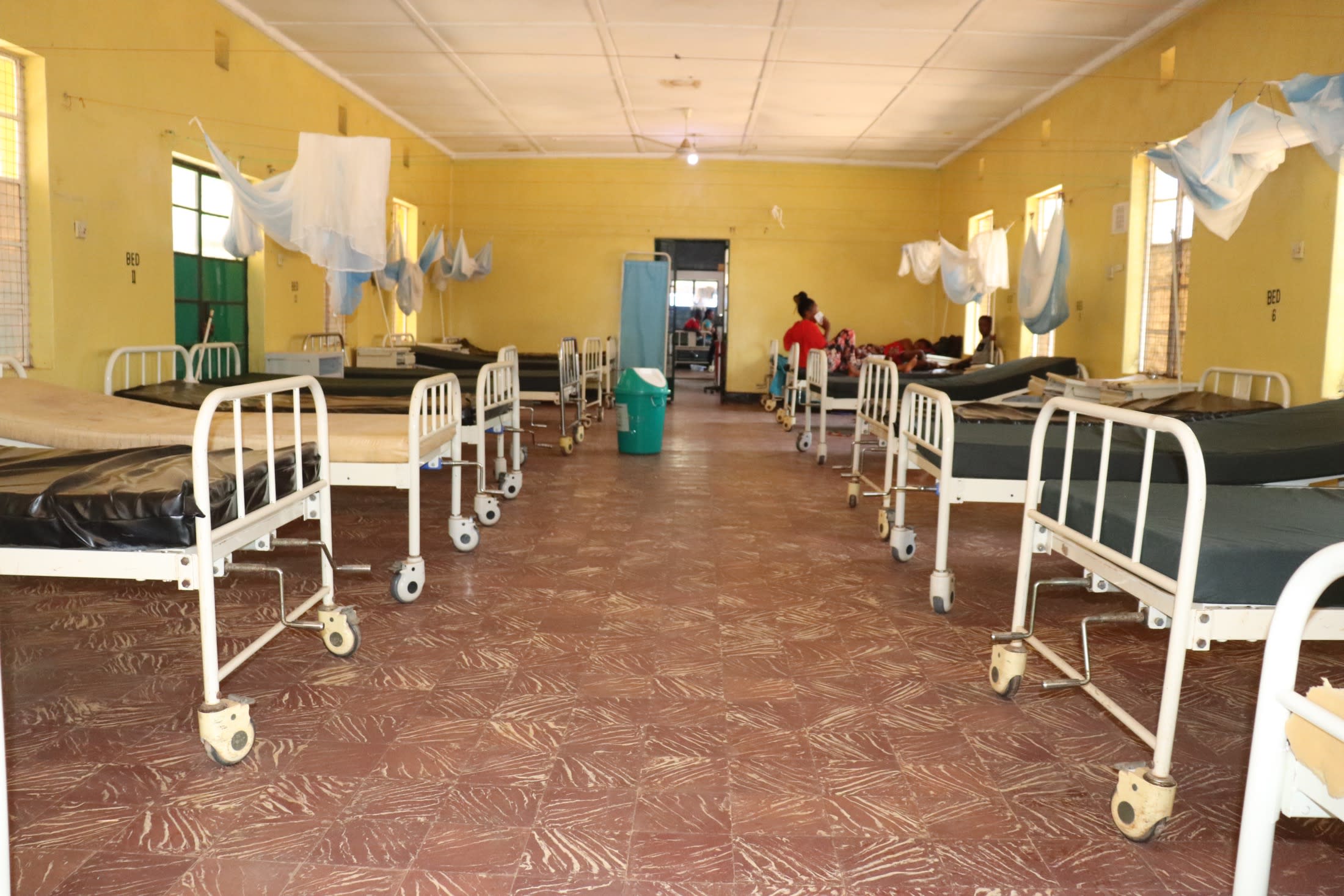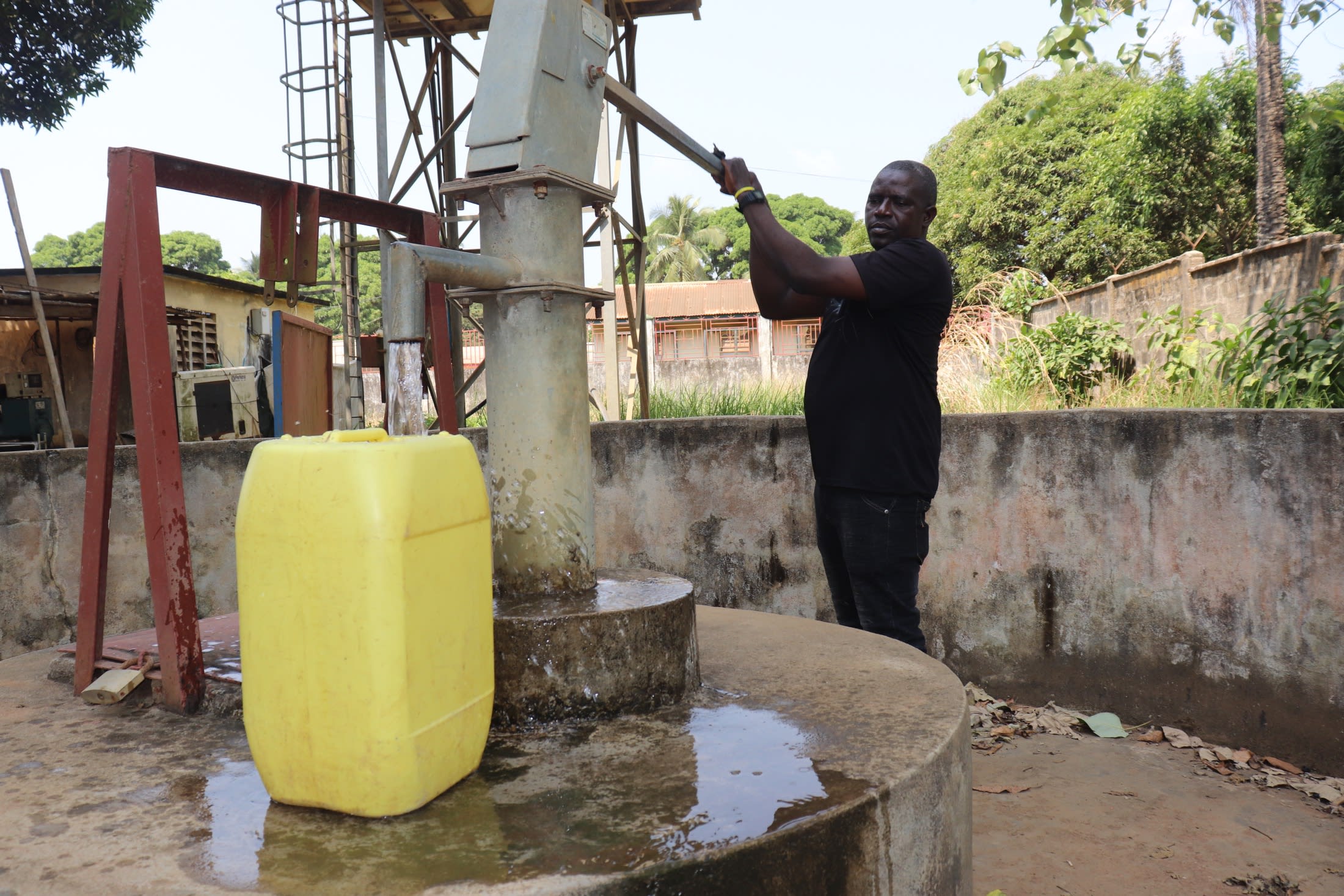Lungi Government Hospital was constructed in 1954. It is intended to serve as the main hospital for the Lungi, Lokomasama, and Kamasondo communities. New buildings are being built daily to increase capacity to serve the number of patients admitted daily.

The hospital administration has seen great improvements in the area of equipment, medication, and lab testing over the last ten years, thanks to the efforts of doctors and staff. Services that used to be carried out in Freetown are now completed at the hospital with ease and doctors from other hospitals come to perform very delicate surgical procedures.

The well used for the hospital is located next to the generator area in an isolated part of the hospital compound. It is sealed off from hospital traffic to avoid anyone tampering with the well and is not used by the outside population but reserved only for patients, staff, and patient helpers. The submersible pump in the well supplies water into tanks in various areas of the hospital. Since electricity is not steadily available, water has to be pumped when it comes on during the night. The water that is pumped into tanks is often not enough because the well runs low at times. If the tank water runs out, patients and their helpers are then allowed to try and fetch water from the well one bucket at a time.
"We try always to have sufficient water in the tanks to prevent too many people from walking back to the location of the pump. Limiting access to plenty of people assures that the water and well areas stay free from contamination. That is why the first thing to do is check the amount of water in each of the tanks because it will be very unfortunate for water to run out during a surgical procedure or a baby delivery," said Osman Conteh, a human resources staff member at the hospital.
Here’s what we’re going to do about it:
Well Rehabilitation
The well marked for this overhaul is dry for a few months every year and needs major work to supply adequate, clean water to the hospital year round. The pump will be removed, and a hand auger will be lowered inside and powered by a drill team. This hand auger will allow the team to drill several meters deeper to hit a sufficient water column that will ensure the well supplies water throughout all seasons.
As the team drills, casing will be installed, transforming the bottom of this hand-dug well into a borehole. PVC piping will connect this lower system directly to the pump, a construction that we know will also improve the quality of water.
Once this plan is implemented, everyone within the hospital will have access to safe drinking water in both quality and quantity, even through the dry months.
Hygiene and Sanitation Training
There will be hygiene and sanitation training sessions offered for three days in a row.
After our visit, the hygiene and sanitation trainer decided it would be best to teach community members how to build a tippy tap (a hand-washing station built with a jerrycan, string, and sticks). They will use these tippy taps for handwashing demonstrations, and will also teach about other tools like dish racks and the importance of properly penning in animals.
These trainings will also strengthen the water user committee that manages and maintains this well. They enforce proper behavior and report to us whenever they need our help solving a serious problem, like a pump breakdown.

 Borehole Well and Hand Pump
Borehole Well and Hand Pump





























